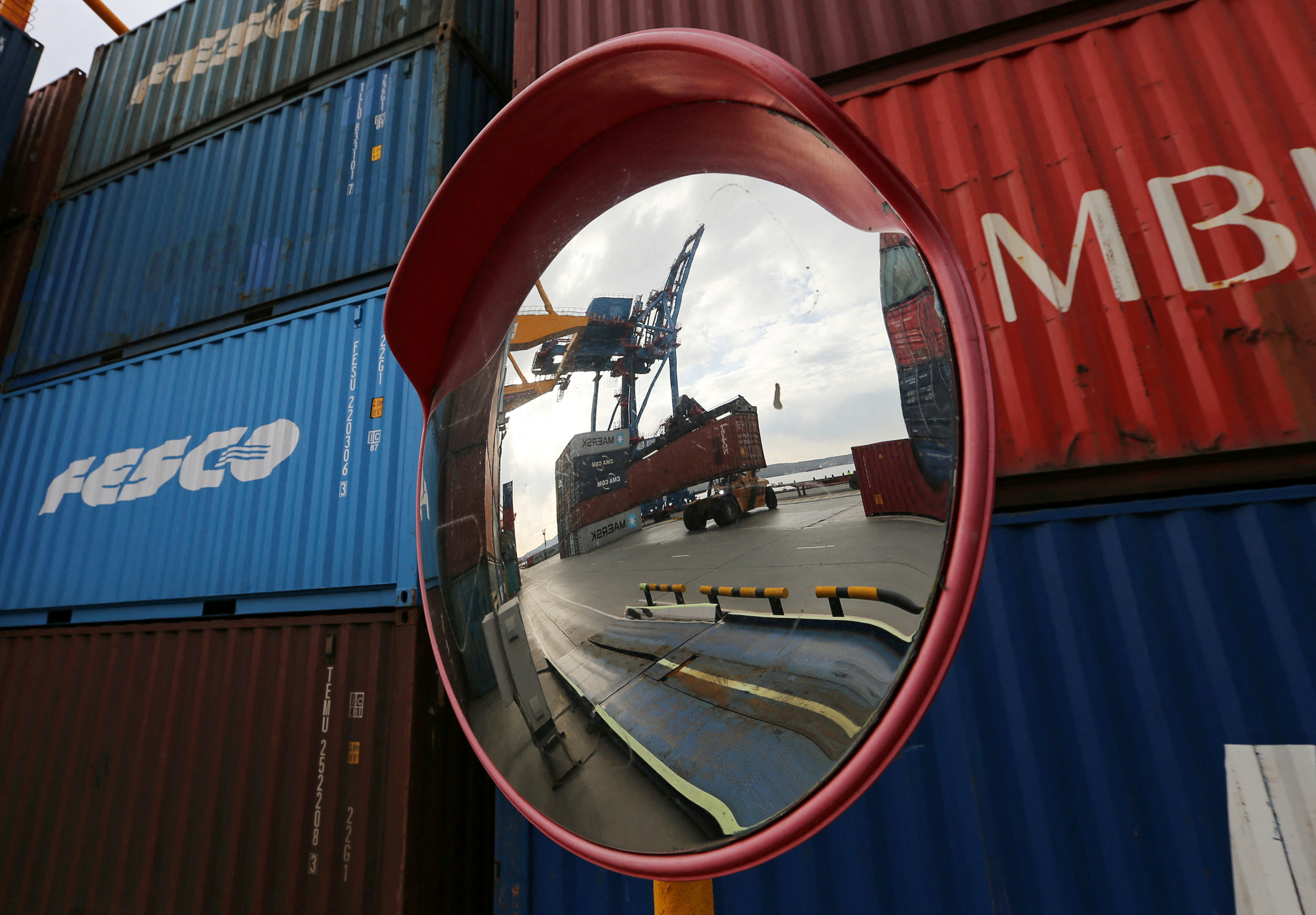
Tomorrow’s tech policy conversations today


The surprise launch of Sputnik 65 years ago, along with the Apollo moon landings, the two space shuttle disasters, and perhaps the movie Armageddon, may encapsulate the space age in our collective memory. But these events obscure a less dramatic, yet far more frequent, activity: near-daily commercial space launches. The American commercial space industry has grown rapidly in recent years, and in turn prompted global interest in replicating its successes. But as the recent failure of a Blue Origin New Shepard rocket demonstrates, moving beyond the longstanding “slow and steady” governmental approach into the Silicon Valley-inspired ethos of “fail fast, fail forward” brings new challenges. The proliferation of commercial space activity demands better coordination and stronger oversight to minimize technical accidents and political tensions.
The growth of the private space industry is extraordinary. So far this year, SpaceX has launched 31 rockets, already matching its total for 2021, at a pace of one launch every 6.4 days and ten times as many launches as every one of its American competitors. The company is building a new launch tower in Florida, providing launch services for NASA and the Department of Defense, and operates 2,500 Starlink satellites offering internet access to a broad range of customers. Blue Origin’s New Shepard is operational, with four launches this year of which three were successful, though its range is limited to suborbital flights. The company’s next model, New Glenn, is under development. Virgin Galactic, owned by Richard Branson but also based in the U.S., advertises “space for the curious.”
The rapid expansion of commercial space activity, as well as its integration into key government programs and services, represents a leap into uncharted waters. The rise of entrepreneurial “New Space” companies will challenge the capacity of both individual states and the international community to regulate and coordinate private space activity effectively. As the cost of placing payloads in space declines, the political and strategic importance of commercial space flight will only grow. Ensuring space is governed responsibly will be essential.


In the wake of the U.S. Supreme Court’s decision to overturn Roe v. Wade last summer, journalists and privacy advocates alike quickly sounded the alarm about the potential for prosecutors to use commercially collected data in abortion-related cases.
Fortunately, that concern has already translated into political action. Legislators in California recently passed A.B. 1242, a law which gives California-based tech and communications companies a way to resist requests for data on digital activities from being used in abortion prosecutions in other states. The law is thus the first in the nation to explicitly block out-of-state investigators from using digital information to query abortion-related actions that are legal in-state. Meanwhile, President Biden has tasked the chair of the Federal Trade Commission to “consider taking steps to protect consumers’ privacy when seeking information about and provision of reproductive health care services.”
Yet ensuring that private data is not misused in abortion-related cases is not the responsibility of policymakers alone. Technology firms also have a critical role to play. As our digital lives lead to evolving social norms about privacy and security, tech firms need to respond to activists, investors, consumers, and the broader public in order to maintain their license to operate. Taking action to stay in tune with social norms may require a combination of shifting data practices toward minimization, implementing end-to-end encryption for private communication, fostering adoption of third-party trustmarks for privacy and security, and producing better transparency reports.


In October of 2019, the professional esports player known as “Blitzchung” was being interviewed on a livestream discussing a match he had just won in Taiwan as part of a tournament for the game Hearthstone. Wearing a gas mask and goggles and speaking to the official Taiwanese Hearthstone stream, Blitzchung repeated a popular slogan of protesters in Hong Kong who had recently taken to the streets to protest China undermining the island’s independence: “Liberate Hong Kong, revolution of our time.”
Blitzchung, whose real name is Ng Wai Chung and who hails from Hong Kong, quickly found himself in the crosshairs of Activision Blizzard, the company behind Hearthstone. Blizzard shut down the stream, suspended and punished Blitzchung, and wrote a formal apology in Chinese on Weibo (but never released it in English). Blizzard declared Blitzchung to be in violation of player rules that forbid conduct that could be offensive or might harm the company’s image, banned him from competing for a calendar year, and demanded he forfeit thousands of dollars in prize money. Blizzard also fired the two streaming journalists who were interviewing Blitzchung and banned them from covering future Activision Blizzard events.
The “Blitzchung affair,” as it came to be known, highlights how video games pose unique challenges to free speech. Western companies complying with Chinese censorship demands—in this case, attempting to suppress advocacy for a free Hong Kong—as a cost of doing business isn’t new, but the role of video games as an important venue for speech and a central battleground for free speech remains underappreciated. Conflicts over free speech in video games go far beyond Hearthstone. Whether in the chat features of video games or in the narrative decisions made by video game designers, the censorship demands of countries around the world are increasingly shaping the digital entertainment consumed by the world’s more than three billion gamers. These demands create a difficult challenge for video game companies: balancing the need for business growth with a commitment to free speech.


As the Biden administration has worked in recent months to develop cryptocurrency regulations, the U.S. government finds itself caught between two extremes: unwilling to actively block cryptocurrency transactions for fear of restricting a growing and potentially lucrative industry but also determined not to give up completely on policing illegal cryptocurrency payments and going after their role in the cybercrime ecosystem. In a recent executive order and subsequent strategy documents, President Biden has pledged to both support development of cryptocurrencies and to restrict their illegal uses, two goals that the United States has long struggled to reconcile when it comes to digital money. And the Biden administration made clear in their executive order just how much the U.S. government wants to have it both ways, touting the potential benefits of virtual currencies for “responsible financial innovation” as well as the risks they pose to consumers, investors, and the “financial stability and financial system integrity.” The executive order extended to all digital assets—not just cryptocurrencies—including other property that exists only in a digital form, such as non-fungible tokens. But of all forms of digital assets, cryptocurrencies are the kind that present the biggest security risks, as well as the greatest potential economic benefits.
In the past year, the balance struck by the U.S. government between encouraging entrepreneurial cryptocurrency ventures and discouraging criminal activities leveraging cryptocurrencies seems to have shifted somewhat, due both to the volatility of the virtual currencies themselves as well as the growing concerns about the types of crimes enabled by those currencies. In particular, the United States seems increasingly interested in developing domestic cryptocurrency policies that can have a global impact on overseas criminal enterprises, including sanctioning cryptocurrency exchanges and individual cryptocurrency wallets, as well as recovering cryptocurrency payments made to criminals. While these are restrictions on the behavior of U.S. individuals and companies, they are ultimately aimed at overseas criminal operations and making it more difficult for those foreign actors to profit from international cybercrime. It is too soon to say whether these recent measures will be effective or enforceable or whether they can be scaled up to address the full extent of the challenges posed by cryptocurrencies. But it is clear that they mark a significant step forward in the history of U.S. cryptocurrency regulation in terms of how aggressive the government is willing to be about going after criminal virtual currency enterprises and also how willing it is to enter the virtual currency space itself with a potential central bank digital currency (CBDC).


When Russian forces invaded Ukraine earlier this year, many observers believed that the conflict would be marked by overwhelming use of the Kremlin’s cyberweapons. Possessing a technically sophisticated cadre of hackers and toolkits to attack digital infrastructure, the Kremlin, according to this line of thinking, would deploy these weapons in an effort to cripple the Ukrainian government and deliver a decisive advantage on the battlefield. The actual experience of cyberwar in Ukraine has been far more mixed: While Russia has used its cyber capabilities, these digital forays have been far less successful or aggressive than many observers had predicted at the outset of the war.
So why has Russia failed to win on the digital battlefield? In recent weeks, Ukrainian and U.S. government officials and the Western tech companies that have rushed to support Ukraine’s digital defenses have argued that Russia’s failure is due in no small part to the sophistication of Kiev’s defenses. But evaluating that claim is immensely difficult and illustrates a fundamental problem for the current state of cybersecurity research and policy. As it stands, there is no playbook for measuring the effectiveness of cyber defense efforts or conveying to the public when they are working. And this makes it difficult to draw conclusions from the war in Ukraine to inform our future defensive posture. Assessing the effectiveness of cyber defenses is a crucially important part of developing cybersecurity policy and making decisions about where and how to invest in computer networks and infrastructure. But in the absence of good defensive metrics, calibrating these investments remains difficult.


One week ago, powerful explosions ruptured a pair of underwater natural gas pipelines—Nord Stream 1 and 2—that run between Russia and Germany. The pipelines represent an important source of natural gas to Germany, and against the background of Russia’s invasion of Ukraine, Nord Stream 1 and 2 provide a key tool for the Kremlin to exert leverage over Europe. While exactly who is responsible for the attack, which European officials say was a deliberate act of sabotage, remains unclear, experts broadly agree that Russia is the key suspect.
As is typical following an event like this, conspiracy theories about who was responsible quickly proliferated online, with the Kremlin promoting a familiar trope: that the United States was responsible for a nefarious, clandestine plot. In official statements, state-backed media, and tweets, Kremlin messengers promoted the idea that the United States carried out the attack.
To track their spread and understand the role of state propaganda in such information, researchers typically examine posts on Twitter. But this only provides a partial view. In this case, as elsewhere, popular political podcasts served as an important, understudied, means through which Kremlin narratives reach American audiences. Following the explosions, 12 popular political podcasts have devoted 18 episodes to the theory. Less than one quarter of these episodes refuted the baseless theory, and nearly 40% fully blamed the United States.
Political podcasts in the United States are instrumental in shaping public opinion on a wide range of consequential subjects and frame the contours of contentious, often polarized debates. Until recently, research on that space has been limited. Using a new Brookings dashboard and database, we are able to more systematically study how popular political podcasts shape the information environment. By spreading the idea that the United States was in fact responsible for the explosions, several leading U.S. podcasters have advanced the Kremlin’s preferred narrative while staying under the radar of researchers—until now.


In late July, the Russian government appeared to have turned its data localization laws against an unlikely target: the Jewish Agency for Israel. Concerned that the decades-old nonprofit, which helps Jews emigrate to Israel from around the world, is accelerating the brain-drain of educated professionals from Russia in the aftermath of its disastrous invasion of Ukraine, Russian authorities accused the group of violating privacy laws in its storage of data pertaining to Russian citizens.
The move against the Jewish Agency for Israel is the latest example of the Kremlin using laws governing online life in Russia to cement power offline, and its deployment against a group with little to no meaningful technology operation illustrates how those laws are being weaponized against groups viewed as a threat to the governing regime. It is hardly a new phenomenon, but its growing frequency underscores that Moscow’s use of online laws to rein in civil society shows no sign of relenting, and, if anything, is only growing more creative.


Few things are as vital to democracy as the free flow of information. If an enlightened citizenry is essential for democracy, as Thomas Jefferson suggested, then citizens need to a way to be kept informed. For most of the modern era, that role has been played by the press—and especially the editors and producers who exercise control over what news to publish and air.
Yet as the flow of information has changed, the distribution and consumption of news has increasingly shifted away from traditional media and toward social media and digital platforms, with over a quarter of Americans now getting news from YouTube alone and more than half from social media. Whereas editors once decided which stories should receive the broadest reach, today recommender systems determine what content users encounter on online platforms—and what information enjoys mass distribution. As a result, the recommender systems underlying these platforms—and the recommendation algorithms and trained models they encompass—have acquired newfound importance. If accurate and reliable information is the lifeblood of democracy, recommender systems increasingly serve as its heart.
As recommender systems have grown to occupy a central role in society, a growing body of scholarship has documented potential links between these systems and a range of harms—from the spread of hate speech, to foreign propaganda, to political extremism. Nonetheless, the models themselves remain poorly understood, among both the public and the policy communities tasked with regulating and overseeing them. Given both their outsized importance and the need for informed oversight, this article aims to demystify recommender systems by walking through how they have evolved and how modern recommendation algorithms and models work. The goal is to offer researchers and policymakers a baseline from which they can ultimately make informed decisions about how to oversee and govern them.

Amid the lingering effects of the COVID-19 pandemic, rising inflation, the war in Ukraine, geopolitical tensions in East Asia, and more frequent extreme weather events, manufacturing supply chains continue to struggle in bringing goods when and where they are needed. These disruptions have affected all aspects of end-to-end supply chains, producing demand shifts, supply and manufacturing capacity reductions, and coordination failures. Prior to 2020, most supply chain designs lacked the resilience needed to cope with these disruptions, and, in response, companies have tried to diversify their sourcing and increase inventories and manufacturing capacity, all of which have led to increased cost.
Now more than ever, companies need a new paradigm for cost-competitive resilience if they are to redesign supply chains while maintaining their competitive advantages. Firms are increasingly turning toward better contingency planning, improving organizational readiness and worker flexibility, automation, and building more collaborative relationships with suppliers to improve supply chain resilience. Other strategies include moving from vertically specialized to vertically integrated firm structures and trading lean supply chain designs for more decentralized network designs. By redesigning products and supply chains for greater agility, firms are creating greater opportunities for postponement and a reduced need for highly accurate demand forecasts.
In support of these strategies toward cost-competitive resilience, a potent first step is to improve end-to-end supply chain visibility, which provides companies with real-time data and a holistic understanding of their partners across the end-to-end supply chain, starting upstream at the procurement of materials or semifinished goods and ending downstream when products reach the end customer. By knowing the real-time location, production rates, and delivery schedules (among other variables) of raw materials, components, and final products across the global supply chain—whether in manufacturing plants, port terminals, warehouses, or in transit—it becomes easier and quicker to identify disruptions, mitigate their impact, and improve productivity. Improving resiliency requires the public and private sectors to establish visibility across the logistics ecosystem. To this end, the U.S. government should use its convening power and—in partnership with supply chain stakeholders—promote the development of freight data exchanges that enable interoperability, while fostering a competitive market for innovative software solutions.


In early February 2021, Sen. Ted Cruz and his co-host Michael Knowles were recording a live episode of the podcast Verdict with Ted Cruz when the Texas Republican coined a colorful metaphor to describe Beto O’Rourke’s base. In Cruz’s telling, the Texas Democrat’s core support is made up of “reporters” acting like “groupies at a Rolling Stones concert throwing their underwear” at him. “I mean if they wore underwear,” Cruz added. With a wry expression, he paused. “Too edgy?” he asked. Knowles laughed, dismissing the concern outright: “It’s a podcast—you can say whatever you want.”
Knowles’ assessment of the podcast ecosystem as a space where “you can say whatever you want” is—for the most part—accurate, both with respect to government regulation and platform guidelines. Even as tech companies raced to limit the spread of election-related misinformation across social media platforms in late 2020, prominent political podcasters played a central role in disseminating election fraud narratives in the lead up to January 6, as we have documented. Podcasts also offered a prime avenue for the spread of pandemic-related misinformation, particularly regarding unproven treatments and vaccines. Despite the real-world harms caused by this type of misinformation and the medium’s growing reach and influence, to-date little research has explored the role of podcasting in shaping political conversations due to a myriad of technical and other challenges.
To help policymakers, researchers, and the tech community better understand podcasting’s role in the information ecosystem, we have developed a dashboard that aggregates political podcast episode data into a single, easy-to-use format and provides an overarching look at the medium in near real time. This data set represents the first publicly available, centralized collection of podcast episode data describing the political podcasting industry in a ready-to-use, downloadable format. We focus on political podcasters, due to both their prominence in the broader media environment and their ability to rapidly shape public opinion and the contours of political debate. We hope that the release of this dashboard and data set will facilitate better monitoring of a medium that has until recently flown under the radar, despite its growing popularity and influence in political conversations.